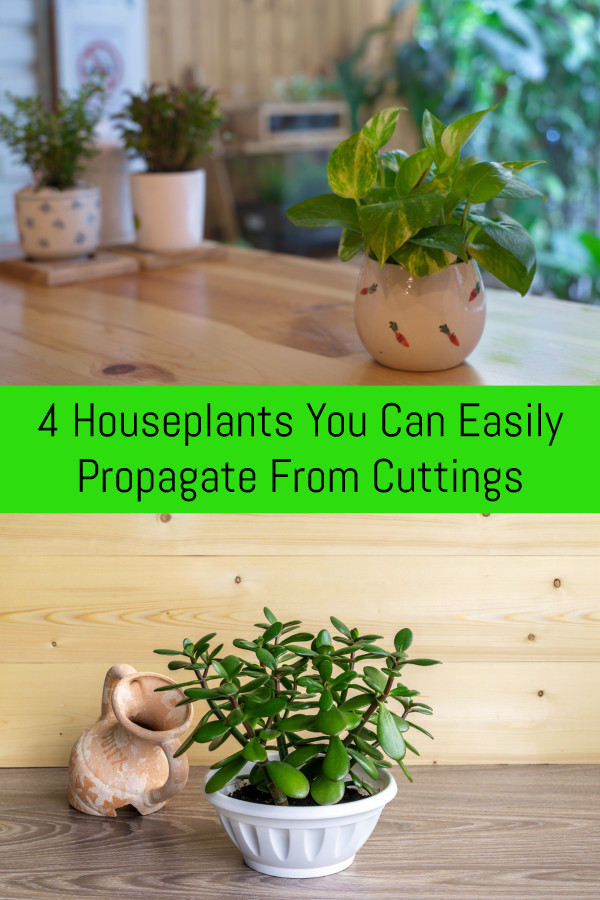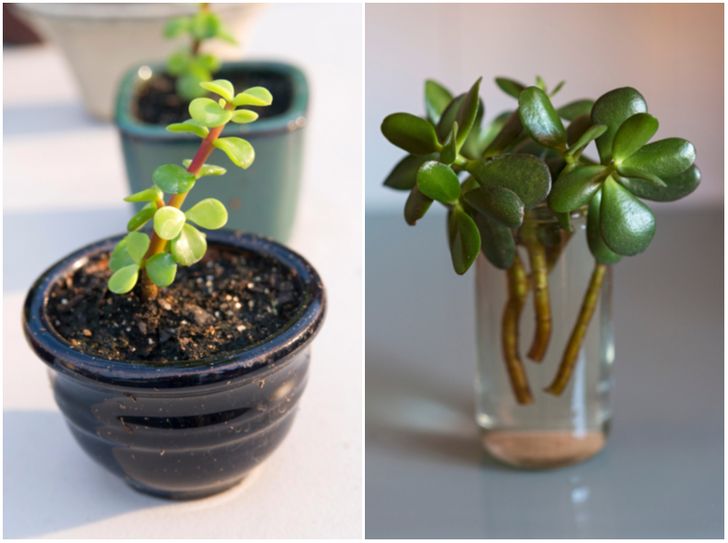
If you are like me, you have a number of houseplants that you just love. I know that there is nothing that makes me happier than watching my houseplants thrive, especially when it is cold and dreary outside.
Houseplants just have a way of cheering us up and making us smile. Not to mention the health benefits they bring by taking up carbon dioxide and releasing oxygen. Houseplants are like natural air filters and mood enhancers.
If you want more of a good thing, or wish to spread the good cheer by giving friends and family members houseplants as gifts, you might want to consider growing new plants from cuttings.
There are many plants that are easily grown from cuttings and you don’t have to have a super green thumb to be successful. Here are four of my favorites.
Jade
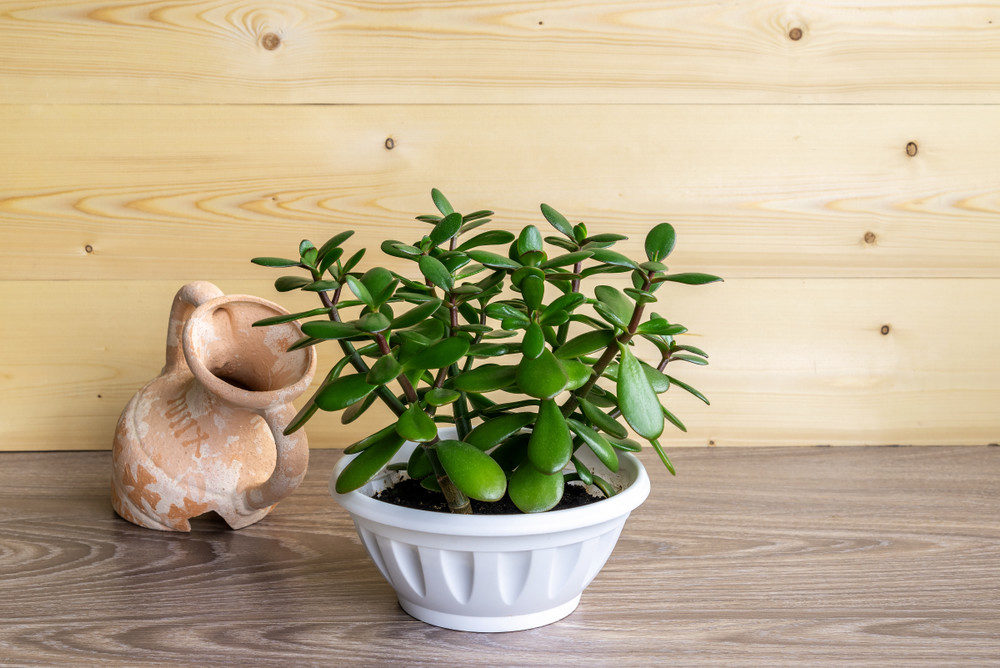
My friend gave me one of her cutting of Jade many years ago and I have since re-gifted cuttings to many of my friends.
It is so nice to have a gift that keeps on giving!
Jade is one of the easiest plants to propagate. It only requires one left to grow a whole new and beautiful plant. The only thing that you have to remember when propagating a jade plant is that the cuttings need to be calloused before they can sprout roots.
In my experience, this can take anywhere between a couple of days to a week. Most of the time it takes a few days.
Propagating Instructions:
- Fill a pot with well-draining organic potting soil.
- Use clean scissors to snip off a leaf at its base. To be sure, wipe your scissors off with rubbing alcohol.
- Place the leaf on top of the soil (not in the soil, this is important to remember).
In about two to three weeks, the jade cutting will develop roots that will find their way down into the soil and a new little jade will form at the base of the leaf. The old leaf will wither up on its own.
Keep the soil moist but not saturated during the process and give your jade plenty of indirect light.
Christmas Cactus
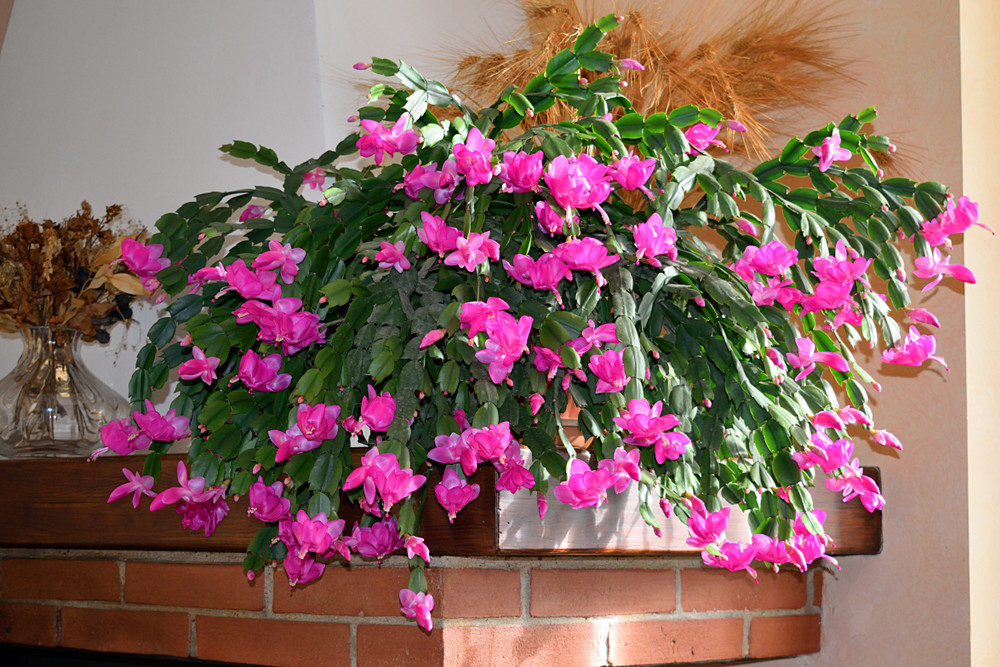
A Christmas cactus makes a spectacular holiday gift and growing your own plant from cuttings can make your gift really personal. I like to dress up little pots and share cuttings from my Christmas cactus each year.
I love to hear from family and friends who sometimes send me pictures of how big their cactus has gotten – all from one little cutting.
It is amazing, really.
Propagating Instructions:
It is important to take your cutting only from healthy foliage.
- Fill a pot with a mixture of damp peat and sand.
- Using clean scissors, take a Y-shaped cutting from the stem tip. Be sure that the cutting is comprised of at least two to three jointed parts.
- Place the cutting on a paper towel and allow it to dry for three hours before potting. This helps avoid stem rot.
- Once the cutting is dry, place it about a quarter of its length below the soil surface.
- Position the pot in an area that receives plenty of light, but not in direct sunlight.
- Keep just slightly moist at first to avoid root rot.
- You should see signs of growth at the tip of leaves and it will be slightly red in color.
- Once you see new growth, be sure to keep the soil moist, not saturated and you can even give your new growth a little fertilizer or spray with compost tea weekly. You can also move the cactus into a place with a little more light as it continues to mature.
Additional growing tips: Keep in mind that your Christmas cactus does best in temperatures between 60 degrees F and 70 degrees F.
To add more humidity you can put your pot on a tray of pebbles that you keep wet. During the winter months, it is best to keep your cactus on the dry side – it can go without water for six weeks.
Wandering Jew
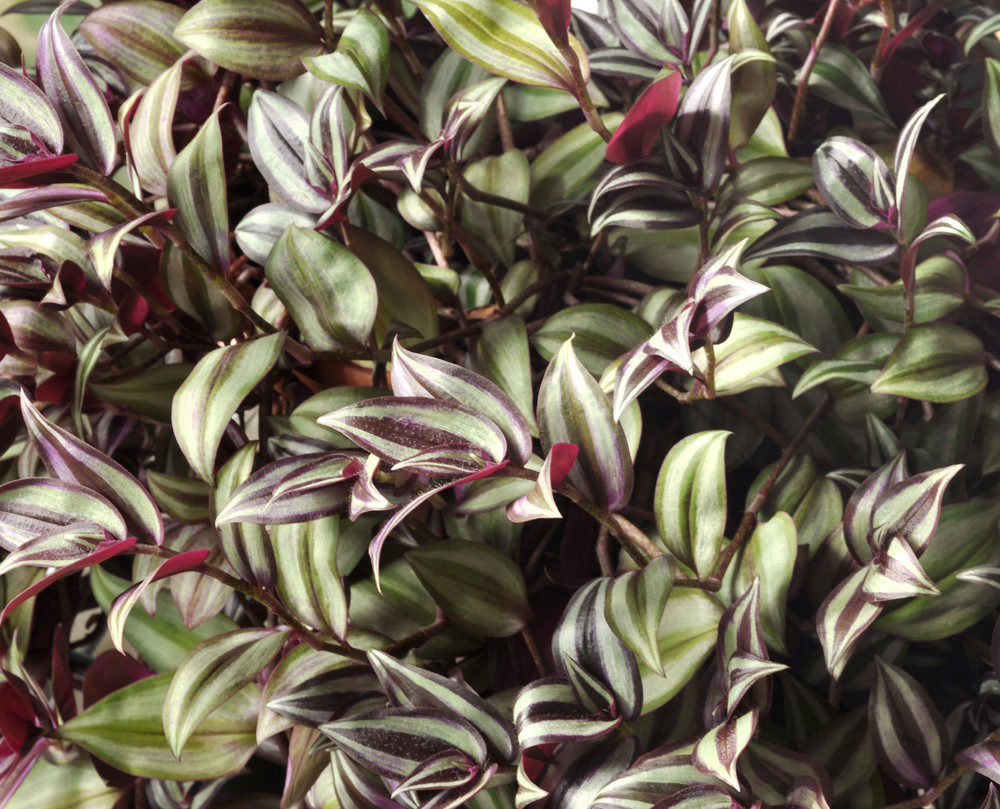
Wandering Jew plants are excellent hanging plants that can spice up any corner in your house. I like to hang my wandering Jew outdoors on my patio for the summer and bring it in for the winter.
If you live in a temperate growing zone you can enjoy your wandering jew outdoors all year. It also makes an excellent groundcover in warmer regions.
Propagating Instructions:
Growing a new plant from a cutting is fairly easy and takes anywhere from three to four weeks.
- Choose a healthy plant that is free from insects and disease. If you have brought your plant in from outdoors, it is extra important that you check it for insects or disease.
- The night before you take the cutting, water your potted wandering Jew slowly until water seeps out of the drainage holes. A well-hydrated plant will respond better to cutting.
- Use a clean and sharp knife or clean scissors for your cutting. Sterilize your tool with rubbing alcohol to be sure it is clean.
- Locate a healthy tip that has new growth.
- Cut just below a leaf node at a 45-degree angle.
- Take several, 4-inch cuttings to increase the success rate.
- Clear the leaves from the bottom 2 inches of the cut and place them in clean water.
- Change the water every other day (keep it clear) and watch for roots.
- As soon as you see established roots you can transfer your cutting to a pot with organic potting soil.
- Keep your plant in a well-lit room and keep soil evenly moist.
Pothos
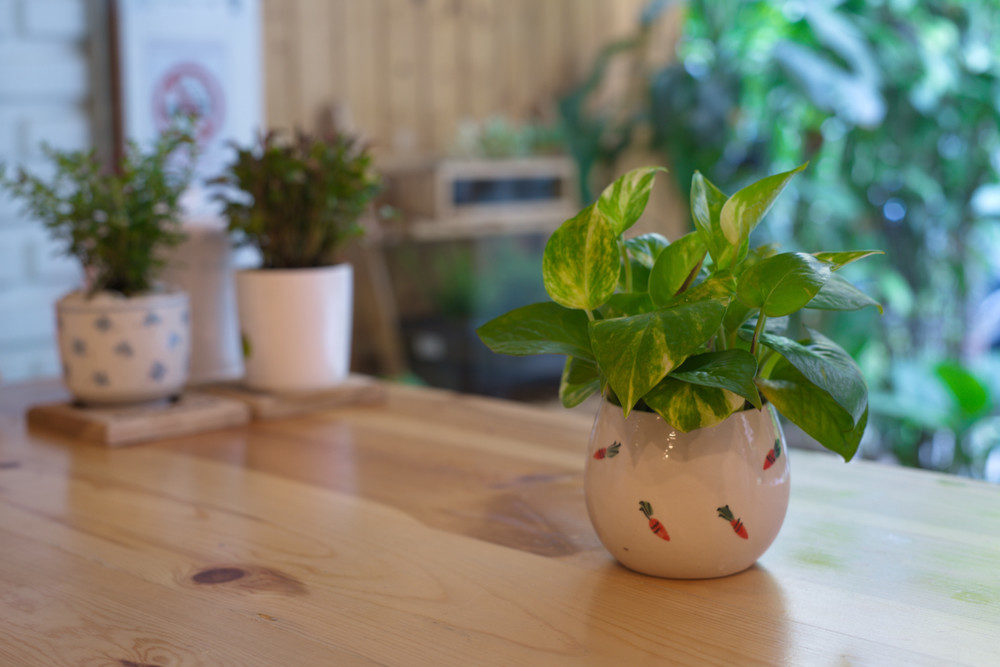
Pothos is a very popular houseplant that anyone can grow. They are not fussy about water or light, making them a great gift for those who struggle keeping plants alive.
Another great bonus with the pothos is that they are super easy to propagate. In fact, propagating older plants will keep them healthy and looking their best.
There are two known ways to propagate pothos – one with water and one with soil. Although I have tried both with success, I prefer the direct soil method.
Propagating Instructions (for both methods):
- Use clean scissors to cut off a 4-6 inch piece of healthy stem. Your cutting should have four or more leaves.
- Take off the leaf that is closest to the end you cut.
Propagating in Water
- Place the cut ends of the stems in a glass of water (I like to use a mason jar)
- Put the jar in a window that gets lots of indirect light.
- Keep the water clean – change it about every other day. You should see roots in about four weeks.
- As soon as you see roots, transplant your cuttings into a pot filled with organic potting soil.
- Place your plant in a place where it gets indirect light and keep the soil moist but not overly saturated.
Propagation in Soil
- Fill a pot half full with peat moss and half with perlite.
- Dip the end where you made the cut on the pothos into rooting hormone (cover the first set of root nodes)
- Place the cutting into the soil mixture.
- Keep the soil moist but not saturated.
- Put the pot in a place where it will receive bright light but not direct sunlight.
Pin This To Save For Later
